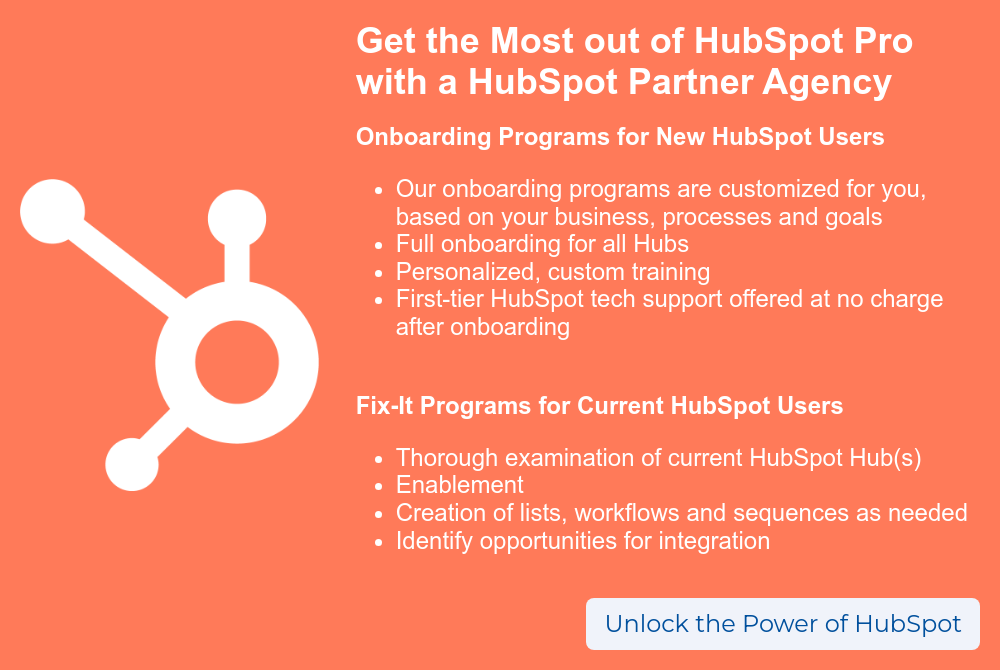Connecting investment to marketing tactics is one of the biggest reporting and return on investment (ROI) issues that businesses face. Sometimes it's easy: if you spend $500 on a Facebook ad and get 100 leads, then you know you spent $5 per lead. But what about other marketing tactics, like blogs? And how do you account for a buyer's journey that typically has multiple points of engagement before a final sale?
Marketing attribution reporting is the strategic way to determine effectiveness of your marketing activities. Here's what it is, why it matters and how to get started.
What is Marketing Attribution Reporting?
Marketing attribution is a reporting strategy that tracks a person's journey toward a conversion. To make it simple: what specific things did they interact with before they did what we wanted them to? For example: attribution reporting might show you that a specific person clicked on a link in a marketing email before they filled out the contact us form on your website.
Marketing attribution can take many forms, but the most common is lead attribution - looking at where leads came from. This isn't necessarily the final sale or contract but is an important stepping stone on your buyer's journey before they make a purchase.
Why It's Important to Track
Marketing attribution reporting makes the nebulous into a tangible, reportable and engageable item. Without attribution reporting, your marketing efforts don't have a clear endpoint. You can look at views and clicks, but on their own, they tell you nothing valuable. What is valuable is knowing how those activities translate into your lead generation.
Additionally, marketing attribution provides insight into how your specific marketing efforts perform. Is your social media activity the biggest driver of overall lead generation? Or are your blogs driving most of your new leads? Once you establish this basic level of marketing attribution, you can go even further to track an entire buyer's journey. These insights can reveal where you should focus your marketing efforts, what type of content to create and how to use marketing assets appropriately.
Ultimately, this creates a clearer picture of the ROI of your marketing efforts. If you know how much time and money you're putting into a specific marketing channel (Facebook ads, for example) and how many leads per month are coming from that channel, you can then identify your average cost per lead. This can help you determine how much (or little) to spend on a particular channel.

How to Report on Marketing Attribution
There are several different ways to approach marketing attribution - and you'll likely want to utilize several of these options together to create a comprehensive look at your marketing strategy.
I'm going to focus on the three credits, or attribution endpoints, available in HubSpot's CRM tool used to track our leads . They are:
- Total number of contacts created
- Total number of deals created
- Total revenue
Credit in this case is the what of your tracking - the final value you care about the most. Typically, it's going to be revenue, but you might also want to look at contacts crated or deals created, depending on your goals. For that reason, I'll use the word "credit" and not "revenue" when describing the models below.
First-Touch Attribution
This model is very straightforward: it looks at the first click or interaction a user has with your brand. This could be clicking on a Facebook link, viewing a page, submitting a form, booking a meeting, etc. In this attribution model, you attribute that first-touch channel, content asset or campaign to the contact.
This is the first place you should start with marketing attribution since it gives you insight into the first touchpoint and engagement a lead (and eventually client) has with your brand. The simplest form of first-touch attribution is a channel breakdown, which will show you where your leads are coming from: social media, email, blogs, ads, etc.
Last-Touch Attribution
Conversely, last-touch attribution looks at the very last thing a contact does before they become a lead. For example a person might come into your site originally from clicking on a Facebook link, but if filling out a specific form is what qualifies them as a lead, then under the last-touch model you would credit the form.
This model is most useful in combination with other attribution models, as it ignores the buyer's path in favor of their final action. However, that can be an advantage in certain applications. For example: if you want to compare several different campaigns against each other or several different landing pages, you might want to only focus on the last-touch attribution to see the total number of leads instead of the specific journey of those leads.
Multi-Touch Attribution
Multi-touch attribution looks at multiple steps of the buyer's journey. This also allows you to consider multiple factors simultaneously, instead of a more siloed view. After all, your leads will likely engage with multiple pieces of content across multiple channels before they convert, not just one.
There are two standard models for multi-touch attribution:
- U-shaped model: This model gives the most credit to the first and last touchpoints and then spreads credit evenly between the actions in the middle.
- W-shaped model: This model gives the most credit to the first, last and very middle interactions in that buyer's journey. The rest of the credit is spread evenly between the other touchpoints.
Each model has their advantages and drawbacks, and choosing the right one ultimately depends on how many steps there are in your buyer's journey. The U-shaped model works best for journeys with fewer average steps and activities before conversion, while the W-shaped model works better for longer journeys.
Multi-Channel Attribution
Finally, you have multi-channel attribution reporting, which looks at the sources of your leads. An easy way to remember the difference between multi-touch and multi-channel is that multi-touch looks at the specific engagement, while multi-channel looks at the specific channel. You might want the latter for comparing your results from different social networks, for example.
There are two standard models for multi-channel attribution:
- Linear attribution: This model gives equal credit to every channel. So for example, if someone interacts with 4 Facebook posts, views one page on the site and submits one form: your social media, page views and form submissions would all receive the same amount of credit.
- Time decay attribution: This model gives the most credit to the most recent channel, and also decays credit the longer it takes for the person to become a lead. For example, if a person becomes a lead over 5 touchpoints and the final touchpoint is a form submission, then the form submission will receive the most credit.
Marketing attribution reporting is a crucial strategy for businesses to track the effectiveness of their marketing efforts and determine their ROI. By understanding the specific touchpoints and interactions that lead to conversions, you can make data-driven decisions about where to focus your marketing efforts and how to allocate your resources.
If you want to uncover the true impact and value of your marketing activities, it's time to start leveraging marketing attribution reporting.
Get the Most out of HubSpot Pro with a HubSpot Partner Agency
HubSpot is a significant investment that makes attribution reporting easy. If not implemented and used properly, you're not getting the most out of this powerful tool. You can go it alone, but working with a HubSpot partner agency means that you don't need to become an expert in HubSpot to get up and running.
 BizzyWeb is a HubSpot Platinum Partner and we offer full-service HubSpot onboarding, clean-up and strategy for all hubs. Our team has over 191 certifications in HubSpot (and constantly growing). No matter what your HubSpot needs are, our team is ready to handle them.
BizzyWeb is a HubSpot Platinum Partner and we offer full-service HubSpot onboarding, clean-up and strategy for all hubs. Our team has over 191 certifications in HubSpot (and constantly growing). No matter what your HubSpot needs are, our team is ready to handle them.
Plus, we are the only agency in Minnesota with a Platform Enablement Accreditation from HubSpot - sounds fancy, but it means we're top-notch in making HubSpot work within your business.
BizzyWeb is a Minneapolis-based digital marketing and web design agency that helps companies get the high-quality leads they need to grow and thrive. Our tactics include inbound marketing, SEO, advertising, web design, content creation and sales automation. We are an accredited HubSpot Platinum Partner and we offer full-service HubSpot onboarding, enablement and strategy for new and current users.





